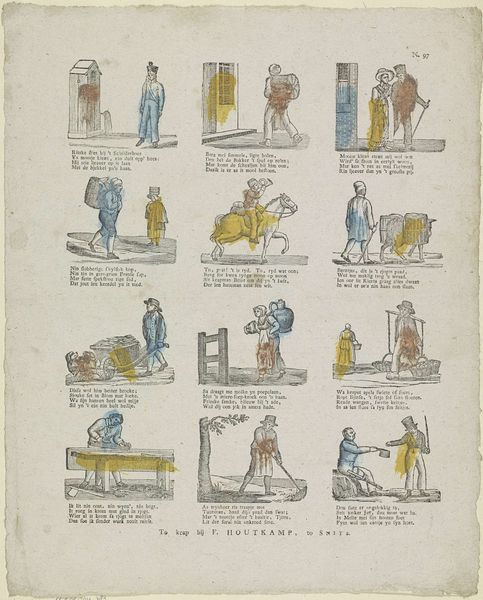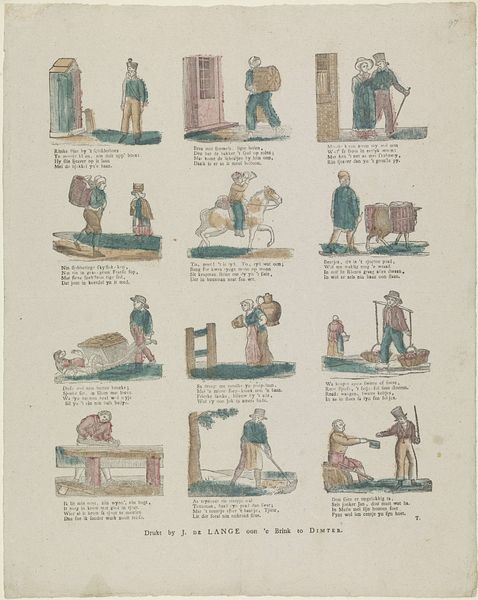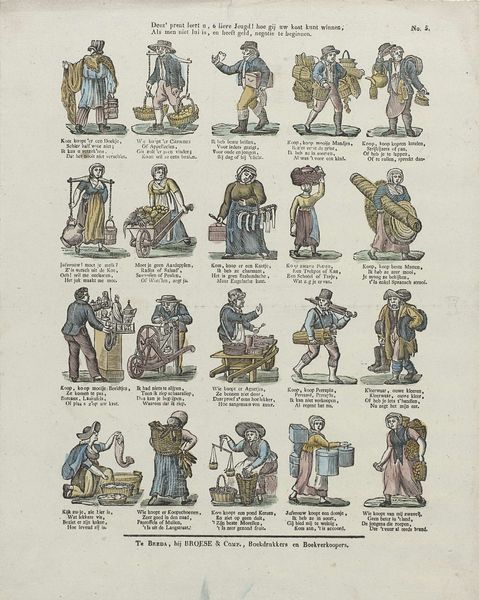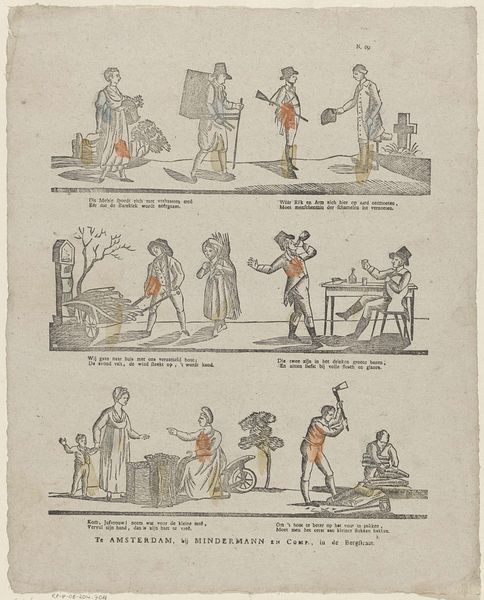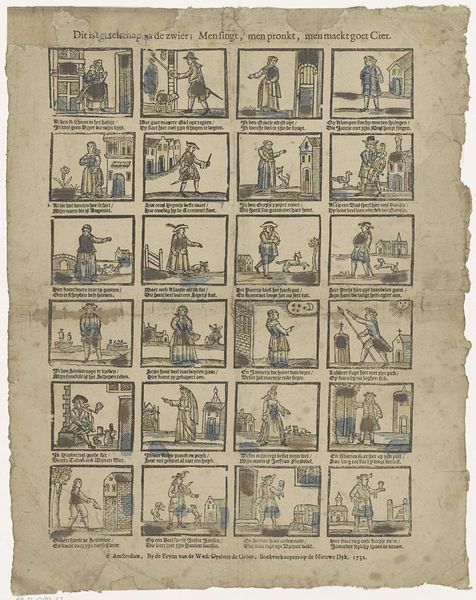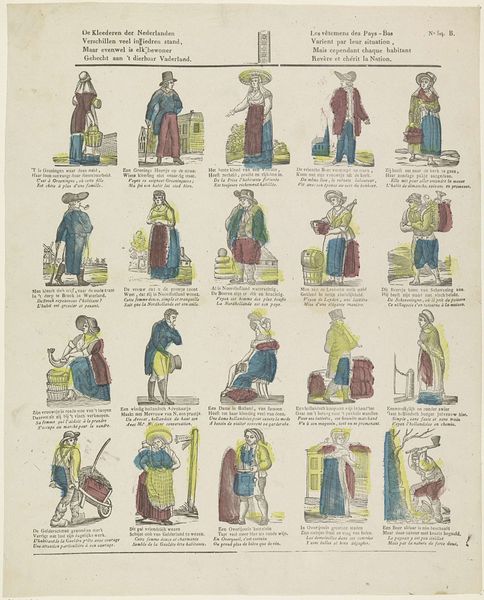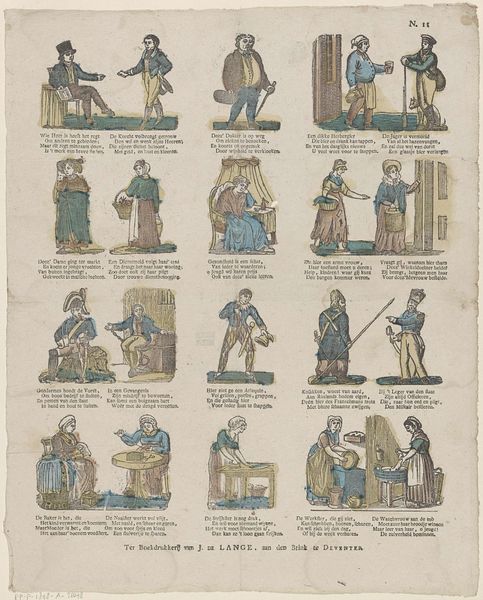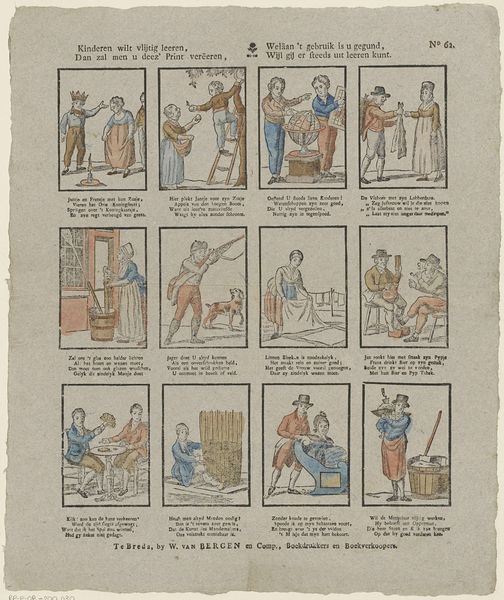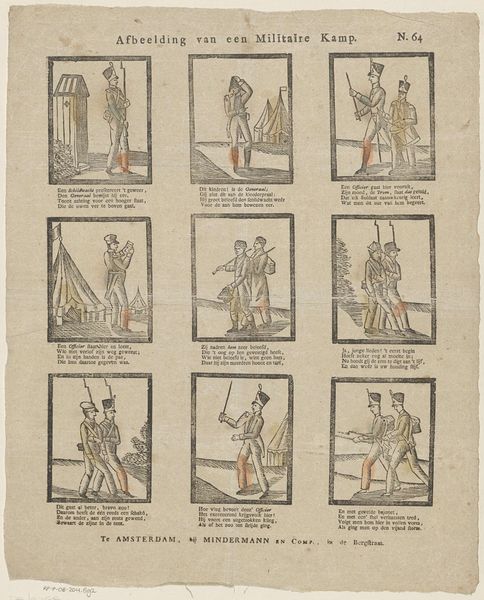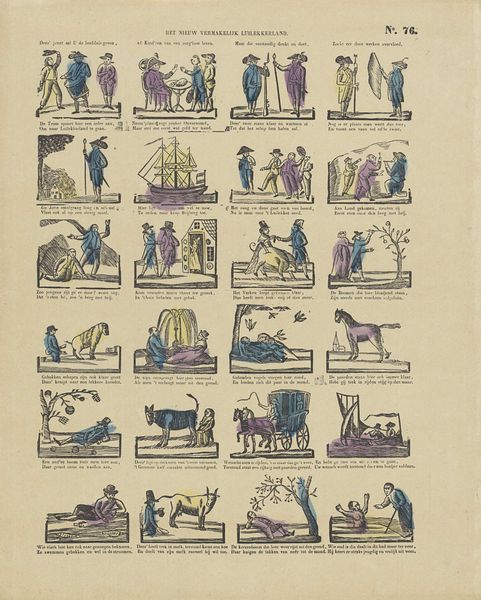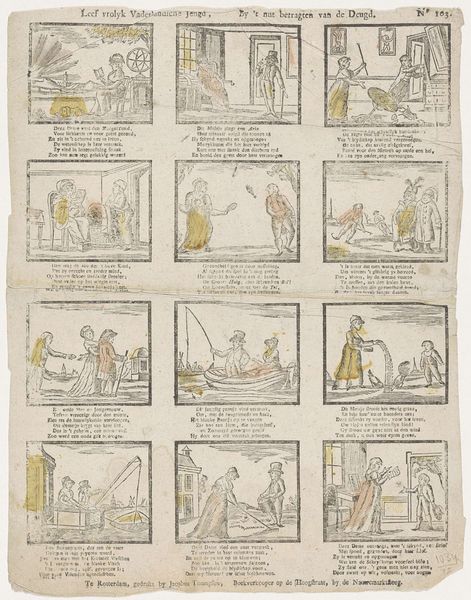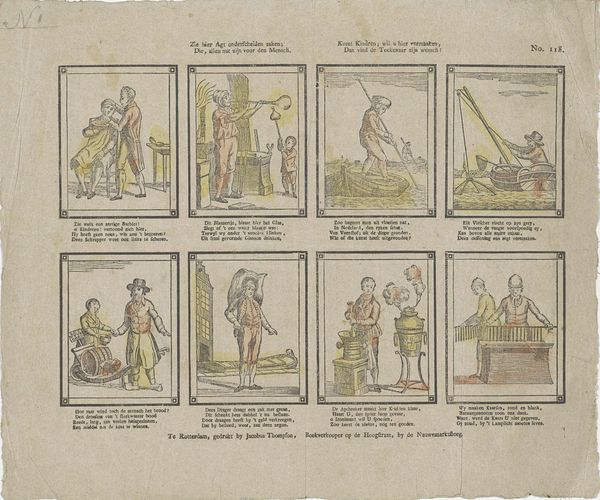
graphic-art, print, engraving
#
graphic-art
#
narrative-art
# print
#
15_18th-century
#
genre-painting
#
engraving
Dimensions: height 420 mm, width 340 mm
Copyright: Rijks Museum: Open Domain
Editor: This print, entitled "Verschillende beroepen," or "Different Occupations," created between 1758 and 1787 by F. Houtkamp, presents a fascinating snapshot of 18th-century labor. It almost feels like a page from a storybook. What cultural symbols or narratives do you see woven into this seemingly simple depiction of daily life? Curator: It's tempting to view these figures as mere laborers, but each represents a specific role within a larger social framework, a microcosm of society itself. Consider the visual rhythm, how each scene is compartmentalized, like individual memories. What stories do these repeating frames evoke for you? Editor: I guess it feels very orderly. Each worker has their assigned space and task. It is interesting that most occupations seem to be manual labour and about people in movement. What's significant about the choice of depicting *these* professions, especially through the graphic form of a print? Curator: Precisely! Prints were more accessible than paintings, reaching a wider audience. These occupations, often involving physical movement, underscore a culture deeply connected to tangible work and community interdependence. Note the distinct costumes - uniform and distinguished. How might those cultural symbols dictate societal hierarchy? Editor: I didn't think about how those attires would set roles within the city, but you are right. Thinking of what they mean now makes this image timeless. Curator: Absolutely, that’s how symbols persist. Even now, certain outfits or equipment still mean a particular role. Visual representations of archetypes solidify that link between collective imagination and everyday function. Ultimately, the image reflects cultural memory and continuity. Editor: I learned so much about how to examine the past for answers. I think that is amazing. Curator: As we interpret images and symbolism over time, it changes how we define our humanity and its endless manifestations of labour.
Comments
No comments
Be the first to comment and join the conversation on the ultimate creative platform.
